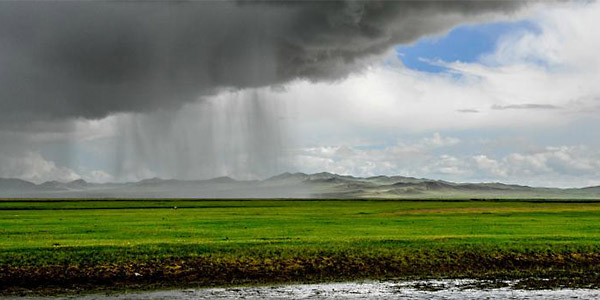SOLVING CLIMATE
Climate change linked to rise and fall of medieval nomadic empires

Heavy rain over Mongolia (Credit: Bernd Thaller, CC BY-NC 2.0)
30 November, 2020
Paleoclimatology provides important context for examining the activities of past human societies.
Tree growth rings and ice cores illuminate the climatic conditions of times gone by. When combined with historical records and documents, climate data can also shed light on important events in human history — including the activities of nomadic groups such as the ancient Türks and Mongols.
“Climate data actually can tell us quite a lot about the history of nomadic empires,” said Nicola Di Cosmo, a professor at the Institute for Advanced Study and an expert on China and Inner Asian peoples and environmental history. Such nomadic empires, Di Cosmo said, were “important historical protagonists” in shaping world events.
Di Cosmo joined MIT Associate Professors David McGee, an expert on paleoclimate records, and Manduhai Buyandelger, a specialist in Mongolian anthropology, for a virtual lecture in which Di Cosmo used a series of case studies to illustrate the links between climate history and nomadic empires.
• • •
Meanwhile, present-day Mongolia is experiencing devastating droughts and winter weather as a result of global climate change.
“Merging new climate data with the historical understanding of a place helps to put in perspective the catastrophic scale of climate change today,” said Manduhai Buyandelger. “For instance, the heavy snowfalls in Mongolia in recent decades are the harshest in known history.”
Full story | MIT EAPS
Related story | Anne McCants: Clues from Climate Change in history
How, in the nadir of the Little Ice Age, did the Dutch create a Golden Age?